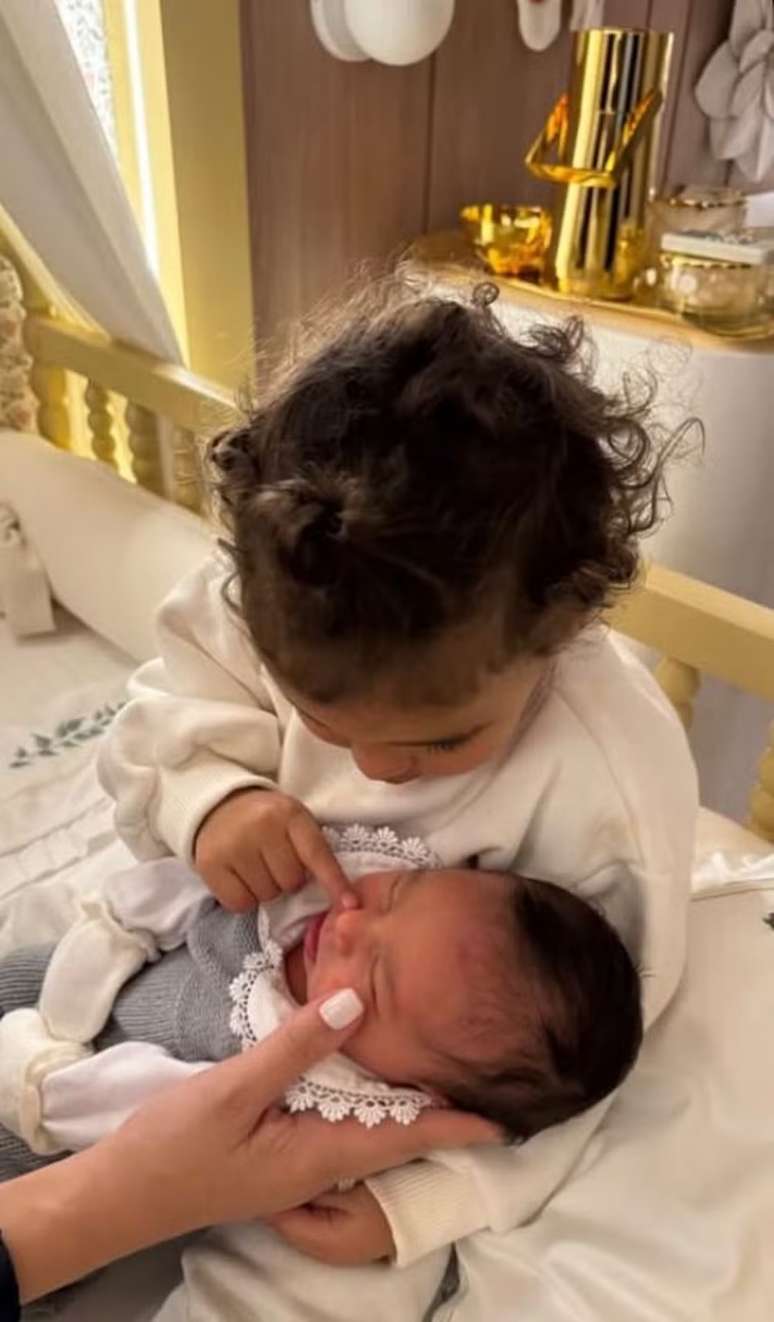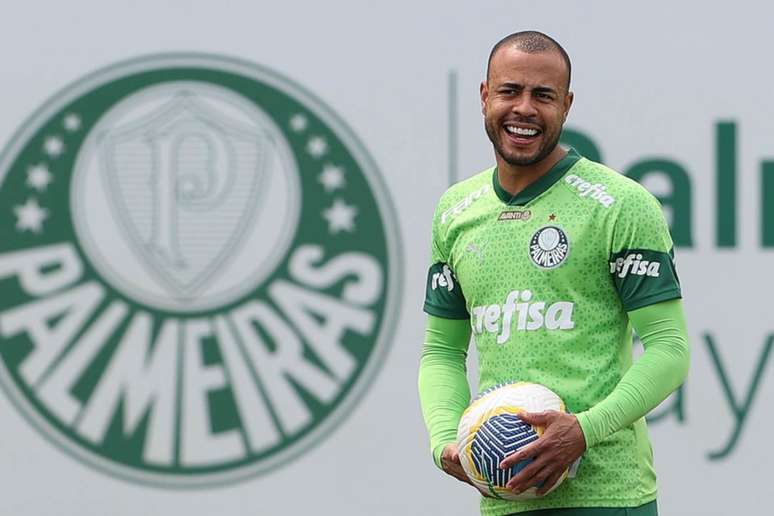The disease that affects newborns can evolve and leave serious sequelae if not treated correctly
When Maria Rita de Sousa was released from the hospital after the birth of her second daughter, she had no idea that the yellow color on her baby’s skin could turn into cerebral palsy. “Bela was born at 38 weeks. She was on schedule. She was born, she cried, she was fine,” she says. On the day of her discharge, she noticed yellow spots on her daughter’s skin, but her doctor only advised her to expose the girl to the sun. “Two days later she was just sleeping. It was December 21, 2016. On the 23rd she began to have a high fever and convulsions. And the yellow had already taken over”, Maria Rita recalls. The diagnosis of cerebral palsy came after an evaluation by a neurologist and an examination which revealed a high level of bilirubin in the blood.
out of every ten babies in Brazil they develop from 6 to 8 jaundice (or yellow) in the first days of life, according to the Brazilian Society of Pediatrics. Of these, 8% to 11% (mostly among preemies) may have a condition more severe than jaundice, the hyperbilirubinemiawhich can lead to cerebral palsy, better known as kernicterusor to death.
Dr. Romy Schmidt Brock, a member of the Neonatology Department of the Pediatric Society of São Paulo, explains that the first evaluation, in the case of yellowish skin in the baby, is the physical exam. “It is the neonatologist who is used to seeing jaundice, because this is not so simple, he needs some training. Based on this assessment, blood draw or examination for the transcutaneous determination of the bilirubin level. It works like a screening test. And nowadays we have a portable device that gets the result the moment you touch the baby’s skin. So, we have an estimate of the total bilirubin value.”
In 2021, 78 babies died from complications of neonatal jaundice in the country, according to preliminary data from the Ministry of Health’s Child and Fetal Mortality Monitoring Panel. In the last 25 years there have been a total of 3,588 deaths, or an average of 143 cases per year.
Fátima Magalhães’ youngest son is part of that sad statistic. He says the boy was born with a normal delivery and left the hospital before 24 hours to live. “I gave Theo a normal birth without any interference. When I left he already had yellow eyes. He had a fever on the second day of his life. to the vaccine and I did the heel prick test, it was very, very yellow. And they only advised me to sunbathe. Then it got worse, he stopped sucking and when we got to the hospital, he was already having seizures,” he says.
The boy spent eight days waiting for a place in intensive care, and 15 others hospitalised. “We went home with the diagnosis and guidance to see a neuropediatrician. She had bilateral loss of vision and hearing, had sequelae in the motor part, difficulty swallowing, took eight medications a day, and had speech therapy and physical therapy every day.”
Fátima says her son had his first pneumonia when he was 4 months old, when he was ordered to have a gastrostomy (a procedure to facilitate feeding), because the baby was choking a lot. At 6 months, Theo had another pneumonia and went into intensive care again. “This time there was no way, the gastrostomy was placed. We returned to our city and 1 month later, he had sepsis and died at 10 months,” the mother complains.
According to her, phototherapy is the most appropriate treatment in cases of hyperbilirubinemia because it alters the structural conformation of the pigment called bilirubin and favors its elimination through urine and faeces. Often, however, the level of bilirubin production is so high that phototherapy cannot prevent the pigment levels from rising.
“In this case, we indicate the exchange transfusion, which would be the blood exchange of two volemia, volumes of blood, of this child, and which would remove, in this exchange, both the bilirubin to prevent the onset of kernicterus and the antibodies they are causing hemolysis of red blood cells and, with this, an increase in bilirubin,” explains the doctor.
Does Picão bath and virgin tile bath help improve jaundice?
“Picão” bath, virgin tile bath, and white rose bath are some of the popular solutions against jaundice. For none of them, however, there is no scientific evidence that they can delay the search for a doctor, which is essential for the disease not to get worse.
According to data released in 2010 by the Brazilian Society of Pediatrics, the country had about 1.5 million newborns a year with jaundice in the first days of life, of which about 250,000 were in critical condition and at increased risk of neurotoxicity, kernicterus, or death.
Daily challenges and achievements
For parents of children with kernicterus, challenges are constant and every achievement is cause for celebration. “I learn from her every day. She has given new meaning to my life and has brought me a strength, a courage, that I never imagined. If I say that I don’t want Bela to run away to São Silvestre and have autonomy, I’ll be lying. But what I want is that he has quality of life and that he is happy and, with his limitations, clinically well, without pneumonia or respiratory crises”, says Maria Rita.
“Dudu was already around 8 months old when we confirmed he had kernicterus,” said Mara Terra, the boy’s mother. “We realized that he wasn’t doing everything he should be doing at the right time: at 3 months, craning his neck, at 6 months, sitting up, he did nothing of the sort, but his pediatrician said everything was normal. that was taking a while.”
Referred to a neuropaediatrician, the boy was confirmed to have had kernicterus and that he had cerebral palsy. “He told me to start treatment: physiotherapy, speech therapy, occupational therapy, all these things. Physiotherapy, he did it for about 11, 12 years, more or less. Then he started doing gymnastics and pilates and many other things, like horses therapy, swimming and art class,” says the mother.
Josiane Veloso had a similar experience with her son, Nícolas. The baby was born normal and was discharged the day after birth. At six days old, Josiane noticed that her son was very yellow and took him back to the hospital. A high level of bilirubin was found in the blood test and Nícolas spent 12 days in intensive care. At 4 months, physiotherapy was indicated and then equine therapy.
“Today Nícolas walks, with some difficulty, talks, feeds. He hasn’t gone to bed yet, but he’s already studying, in first grade. He learned to read and write with some difficulty, because his fine motor skills are still very compromised . But that’s all, ”says the mother.
Jaundice: Treatment in the first few days of life is important
Knowing that jaundice can turn into a serious case is important to avoid kernicterus or even the possibility of death from complications of the disease. This is what specialists warn when they emphasize the need not to underestimate jaundice.
“The first point is not to be underestimated. And the second point is an adequate guide for the parents of these patients, with the medical team explaining and emphasizing the importance of treating this jaundice to prevent high bilirubin levels from occurring and lead to kernicterus,” emphasizes neonatologist Romy Schmidt Brock.
Fátima Magalhães strengthens the doctor’s alert. “It is very difficult to talk about it, but it is very important. I didn’t know how bad the jaundice was. Even some pediatricians underestimate it. I lost my son due to lack of information and negligence. hospital without having had a bilirubin test”.
* Journalist Mariana Macedo de Melo suffered from cerebral palsy due to jaundice when she was six days old. Today she, at the age of 24, just graduated in journalism, she joined the team of Focas Saúde do Stadium.
Source: Terra
Ben Stock is a lifestyle journalist and author at Gossipify. He writes about topics such as health, wellness, travel, food and home decor. He provides practical advice and inspiration to improve well-being, keeps readers up to date with latest lifestyle news and trends, known for his engaging writing style, in-depth analysis and unique perspectives.








